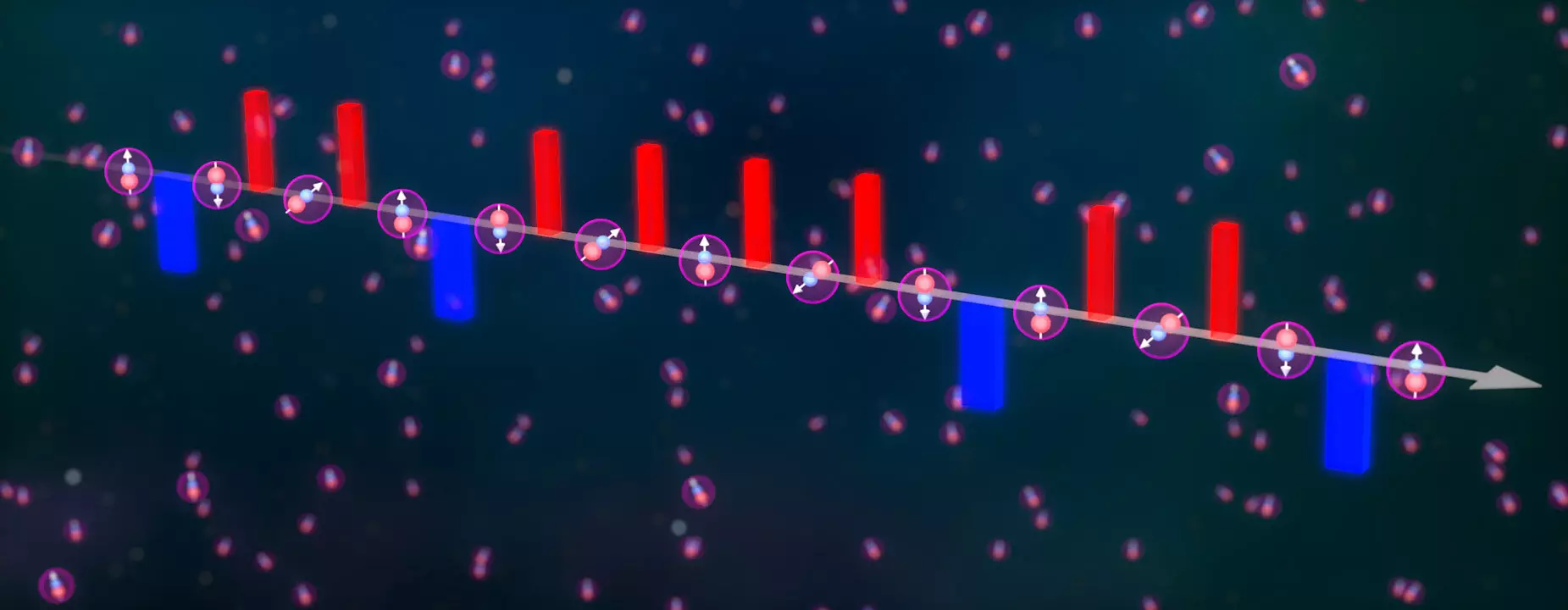Quantum spins are fundamental to understanding various phenomena in the universe, including the workings of magnets and the exciting properties of superconductors. These tiny magnetic moments play a pivotal role in quantum mechanics, influencing how particles behave on a microscopic scale. However, creating controllable experimental setups that mimic the interactions of quantum spins has remained a substantial challenge for physicists. Recently, a collaborative research effort led by Jun Ye from JILA and NIST has provided a promising blueprint for engineering such systems, paving the way for breakthroughs in quantum simulations.
In a groundbreaking study published in *Nature*, Jun Ye and his team harnessed the power of a technique known as Floquet engineering, employing periodic microwave pulses to manipulate the interactions between ultracold potassium-rubidium molecules. This innovative approach not only serves as a means to explore fundamental magnetic systems but also highlights the potential for these polar molecules to act as platforms for quantum simulation. By using microwave pulses effectively, the team was able to tune the interactions within the molecular system, leading to two-axis twisting dynamics that may set the stage for advanced quantum sensing technologies.
Calder Miller, a graduate student and lead author of the study, emphasized the immense potential of polar molecules in uncovering novel physics. “If we can engineer their interactions, we could create entangled states that enhance sensitivity to new physical effects,” he stated. The implications of their findings may well transcend the current understanding of many-body systems, offering fresh insights into quantum manipulation techniques.
Floquet engineering functions analogously to a “quantum strobe light.” By adjusting the frequency and intensity of periodic microwave pulses, researchers can influence the dynamics of quantum systems in real-time. This novel technique contrasts sharply with conventional methods, which often become constrained by the limitations of the available experimental setups. As Annette Carroll, a member of Ye’s research team, pointed out, they successfully engineered a new arbitrary waveform generator, thus vastly expanding the scope of control over interaction mechanisms within their system. The ability to apply a sequence of thousands of pulses allows for not just the removal of single-particle noise but also a nuanced alteration of interactions among molecules.
Prior to implementing Floquet engineering, the researchers began by encoding quantum information in the molecules’ two lowest rotational states. By initially applying a microwave pulse, they established a quantum superposition between these states. Once the quantum information was encoded, the focus shifted towards manipulating specific quantum interactions characterized by models that describe how spin interactions manifest. Such insights are fundamental to grasping the broader implications for magnetic materials and the intricate phenomena associated with many-body systems.
To visualize this concept, one might imagine the molecules engaging in a coordinated dance, where their movements reflect alterations in spin orientation based on how they interact with one another. The “quantum strobe light” effect nudged the interactions in such a way that that the researchers were able to confirm similarities to the dynamics produced through electric field tuning, showcasing the effectiveness of their Floquet engineering approach.
Perhaps the most thrilling result of the experiment was the observation of two-axis twisting dynamics. This technique involves adjusting the orientation of quantum spins along two axes concurrently, leading to complex entangled states. The significance of entangled states in quantum technology cannot be overstated, as they greatly enhance measurement precision and facilitate advancements in various fields, including quantum sensing and spectroscopy.
Miller recounted the excitement of witnessing initial signs of two-axis twisting within the experiment, marking a significant milestone that had eluded physicists for decades. The idea behind two-axis twisting dates back to the early 1990s, and its realization within laboratory settings exemplifies the progress being made in the field of quantum mechanics.
While the recent findings by Ye and his collaborators mark a critical step forward, they also underscore the importance of further exploration into the detection of entangled states generated by their engineered systems. James Thompson and his team at JILA have been pursuing alternative methodologies, including cavity quantum electrodynamics (QED), suggesting a thriving and collaborative research environment focused on unlocking the mysteries of quantum interactions.
The innovation showcased through the application of Floquet engineering offers new pathways to understand and manipulate quantum spins. As researchers continue to unravel the complexities of these interactions, the potential for practical applications in quantum sensing and quantum computing grows exponentially, ushering in a new era of technological advancement. The journey is ongoing, and the discoveries laid out in this research are just the beginning of what may be possible in the realm of quantum mechanics.


Leave a Reply